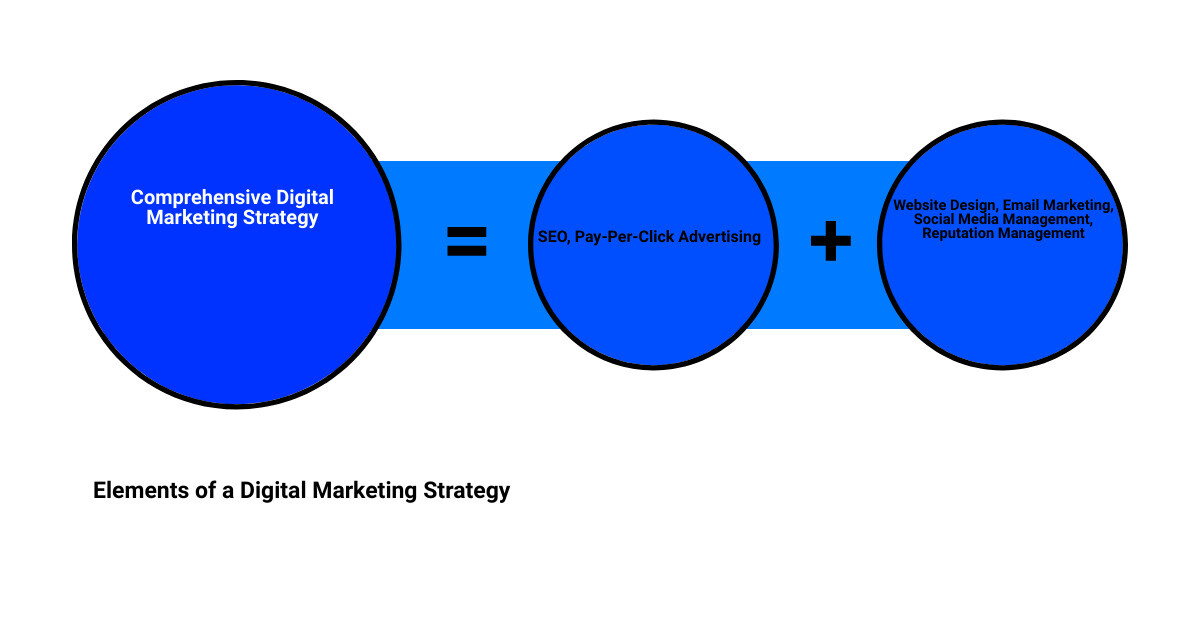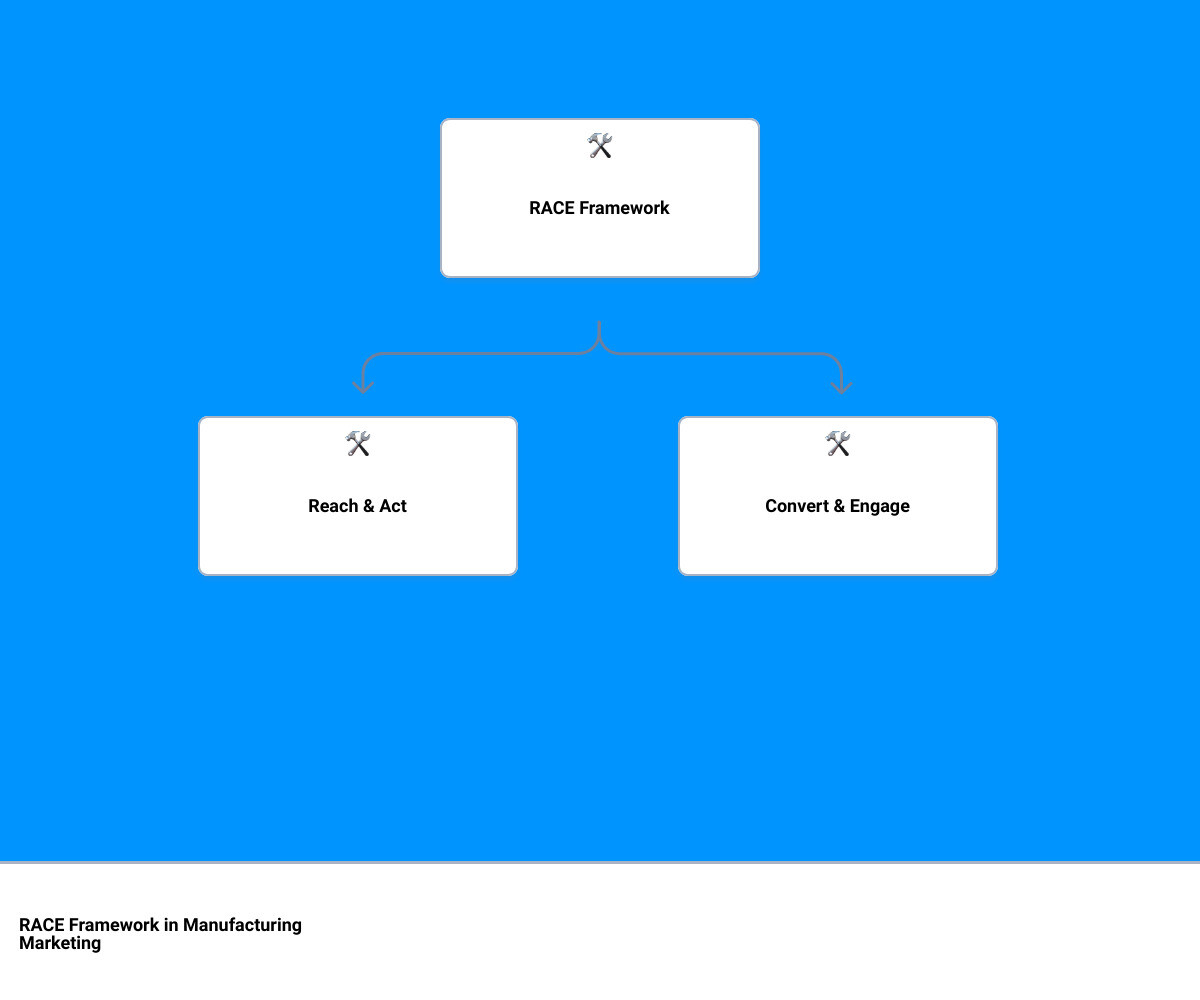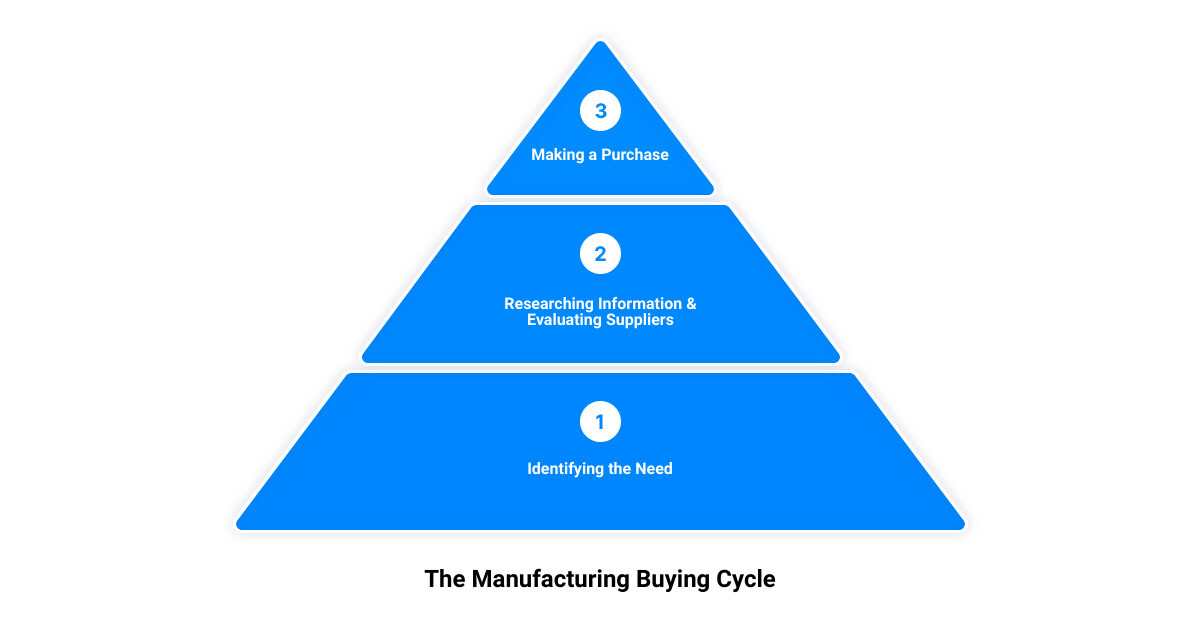Introduction: The Importance of a Tailored Marketing Strategy for Manufacturing Industry
In the competitive landscape of the manufacturing industry, having a cookie-cutter approach to marketing won’t cut it. Why? Because the manufacturing sector, with its unique challenges and opportunities, demands a more tailored approach. For small to medium-sized business owners who are grappling with low organic website traffic, reaching the right audience, and making the most of digital marketing strategies, it’s time to transform your manufacturing business with a winning marketing strategy.
The manufacturing industry is not just about producing goods. It’s about highlighting your brand’s value, connecting with the right audience, and ultimately driving sales. This requires a well-thought-out and executed marketing strategy, one that aligns with your business objectives, understands the manufacturing buying cycle, and harnesses the power of digital marketing tools.
But the key question remains: how do you create such a strategy? That’s where Cleartail Marketing comes in. With our expertise in marketing strategy for the manufacturing industry, we guide you through the process, providing customized solutions for your specific pain points and helping deliver measurable results.
Embarking on this transformation isn’t just about growth— it’s about securing a sustainable future for your manufacturing business. So, let’s dive into the importance of a tailored marketing strategy for the manufacturing industry, and how you can begin your journey towards significant online growth.
Understanding the Manufacturing Buying Cycle
In order to effectively market your manufacturing business, it’s crucial to grasp the intricacies of the Manufacturing Buying Cycle. This cycle is a road map that guides a potential customer from becoming aware of a need for your product or service to eventually making a purchase. Let’s break down each stage of this cycle to understand how you can enhance your marketing efforts at each step.
Identifying the Need
The first step in any buying cycle is the identification of a need. Your potential customer recognizes that they require a product or service that you offer. Your marketing efforts at this stage should focus on creating awareness about your offerings and how they can fulfill these needs. This can be achieved through SEO optimized content that targets keywords related to your business, helping your potential customers find you when they start their search.
Researching Information
After identifying their need, the next step for the purchaser is to research information to find a solution. They will look for different product options, compare features, and gather as much information as they can. Here, your focus should be on providing detailed and easily accessible information about your products or services. This can be accomplished by developing your online content to grow leads and sales and create a more engaging brand.
Evaluating Suppliers
At this stage, the purchaser evaluates potential suppliers for their chosen solution. They will consider factors like your brand reputation, market presence, customer testimonials, ratings, and reviews. Your social media channels and website play a crucial role here. Make sure they reflect a strong brand image and provide ample positive customer reviews and case studies.
Creating a Shortlist
Once they’ve evaluated their options, the purchaser creates a shortlist of potential suppliers. To make it to this shortlist, your business needs to stand out from the competition. Offering unique selling propositions, competitive pricing, and excellent customer service can serve as differentiators and improve your chances of making it to the shortlist.
Making a Purchase
The final step in the Manufacturing Buying Cycle is the actual purchase. The purchaser selects their preferred supplier and completes the transaction. At this stage, your focus should be on providing a seamless purchasing experience. Ensure that your website is user-friendly, your checkout process is straightforward, and any potential queries from the customer are promptly addressed.
Understanding and effectively catering to each stage of the Manufacturing Buying Cycle can significantly enhance your marketing efforts, ensuring that you not only reach your target audience but also convert them into paying customers.

Developing a Comprehensive Digital Marketing Strategy
To truly transform your manufacturing business, you need to develop a comprehensive digital marketing strategy that goes beyond understanding the Manufacturing Buying Cycle. This strategy should encompass various aspects of online marketing, each with its unique benefits and opportunities for growth.
The Role of SEO in Manufacturing Marketing
Search Engine Optimization (SEO) is a game-changer for manufacturers. It’s not just about getting your website to rank highly on search engine results pages. It’s about making your online presence more visible to potential customers who are actively searching for your products or services.
A well-executed SEO strategy can make your website more accessible, engaging, and valuable to search engine users, leading to a surge in organic traffic and, ultimately, increased sales and revenue. It’s about quality over quantity: by optimizing your site for relevant keywords, you can attract high-quality leads who are more likely to convert into customers.
The Power of Pay-Per-Click Advertising
Pay-Per-Click (PPC) advertising is a highly effective tool for driving immediate traffic to your website. These strategically placed ads can significantly increase brand awareness and generate immediate sales. In fact, PPC ads are the third-largest generator of customer conversions online, according to Google.
The Importance of Website Design and Development
Your website is your digital storefront, and it plays a critical role in your marketing strategy. An easy-to-navigate, aesthetically pleasing website can significantly enhance user experience, leading to longer site visits, lower bounce rates, and higher conversion rates.
Moreover, a well-designed website can effectively showcase your manufacturing capabilities, products, and services, making it easier for potential customers to understand what you offer and why they should choose you over your competitors.
The Impact of Email Marketing
Email marketing remains one of the most effective digital marketing strategies, offering an impressive return on investment. By segmenting your email list and personalizing your communications, you can foster stronger relationships with your customers, keep them informed about your products and services, and encourage repeat business.
The Influence of Social Media Management
Social media is more than just a platform for sharing content. It’s a powerful tool for connecting with your audience, increasing brand awareness, and driving traffic to your website. By developing a strategic social media presence, you can engage with your customers in real-time, build loyalty, and turn followers into customers.
The Significance of Reputation Management
Finally, reputation management is a crucial aspect of a comprehensive digital marketing strategy. Your online reputation can make or break your business, so it’s essential to monitor and respond to online reviews, engage with customers on social media, and address any negative feedback in a timely and professional manner.
In conclusion, a comprehensive digital marketing strategy is a multi-faceted approach that combines SEO, PPC advertising, website design and development, email marketing, social media management, and reputation management. By leveraging these tools and strategies, you can effectively reach your target audience, generate high-quality leads, and transform your manufacturing business.

Implementing the RACE Framework in Manufacturing Marketing
The foundation of a successful marketing strategy for the manufacturing industry lies in the implementation of the RACE Framework. This strategic approach focuses on Reach, Act, Convert, and Engage stages, ensuring a full-spectrum, customer-centric approach to marketing.
Reach: Creating Awareness through Google Ads, Social Media, and PR
The initial stage involves creating awareness of your manufacturing business. This is achieved through strategic channels like Google Ads, social media, and public relations. Google Ads help in targeting specific keywords related to your business, increasing visibility on search engine results pages. Social media platforms, such as Facebook, Instagram, LinkedIn, and YouTube, are powerful tools for reaching your target audience, nurturing relationships, and building brand awareness. Public relations activities can further enhance your reach by generating positive media coverage.
Act: Enhancing Content Strategy and Digital Experience
The second stage of the RACE Framework focuses on encouraging interaction with your brand. This involves enhancing your content strategy and digital experience. High-quality, industry-relevant content in the form of blogs, white papers, case studies, and video content can provide valuable insights to your audience, prompting them to take action. An optimized digital experience, encompassing a user-friendly website design and seamless navigation, can further improve interaction and lead generation.
Convert: Lead Nurturing, Retargeting, Personalization, and Conversion Rate Optimization
The conversion stage aims to transform leads into customers. This is achieved through lead nurturing and retargeting campaigns, personalization, and conversion rate optimization (CRO). Utilizing email marketing for personalization, for instance, can increase open rates by 22% simply by including the recipient’s full name in the subject line. Retargeting campaigns, on the other hand, help in re-engaging potential customers who have shown interest in your products or services. CRO techniques, including A/B testing and website analytics, can provide valuable insights into your website’s performance, helping you optimize it for improved conversions.
Engage: Building Long-Term Relationships through Email Marketing, Social Media, and Live Chat
The final stage of the RACE Framework focuses on engaging customers to foster long-term relationships. This involves utilizing email marketing and social media channels for regular communication and customer service. Personalized email campaigns can significantly improve customer engagement and loyalty. Social media platforms provide a platform for regular interaction, feedback, and customer service. Live chat features on your website can offer immediate assistance to visitors, improving customer satisfaction and boosting conversions.
Implementing the RACE Framework in your manufacturing marketing strategy ensures a comprehensive approach that caters to every stage of the buyer’s journey. By focusing on reach, action, conversion, and engagement, you can effectively optimize your marketing efforts, driving growth and success for your manufacturing business.
Setting Clear Goals and Tracking Progress
The key to any successful manufacturing marketing strategy is setting clear, measurable goals and consistently tracking progress. Without clear goals and regular progress tracking, even the most innovative strategies can flounder.
The Importance of Documenting Your Marketing Plan
Just as blueprints are crucial in manufacturing, a well-documented marketing plan is essential for your business’s success. This document will serve as your roadmap, outlining your goals, strategies, and tactics. It will also help you decide where to allocate your resources and how to measure success.
Documenting your plan provides clarity and focus for your team. It makes sure everyone is on the same page, and it offers a benchmark against which to measure progress. It’s important to remember, though, that your marketing plan is a living document. It should be reviewed and updated regularly to reflect changes in your business environment, industry trends, and customer behavior.
The Role of Marketing Technology and Automation Tools
Leveraging marketing technology and automation tools can significantly enhance your manufacturing marketing efforts. These tools can streamline processes, save time, and provide valuable insights to help you make data-driven decisions.
For example, marketing automation platforms like HubSpot offer transparency across teams and automate various tasks, such as content creation, email campaign scheduling, and website publishing, freeing up your time to focus on strategy and big-picture thinking.
Other tools like Trello can help you manage marketing projects more efficiently, ensuring that nothing falls through the cracks. And with Google’s G Suite, you can work collaboratively with your team in real-time, no matter where they are located.
The Need for Regular Tracking and Measuring of Marketing Efforts
Regular tracking and measuring of your marketing efforts are essential to gauge the effectiveness of your strategies and identify areas for improvement. By monitoring key metrics such as leads generated, conversion rates, and cost per lead, you can gain an understanding of your marketing campaign ROI.
Through campaign tracking with marketing automation platforms, you can identify which campaigns are most successful, which are delivering the most leads and sales, and which are most effective at converting leads into customers. This information will allow you to optimize your marketing budget and focus more on campaigns that yield the best results.
Remember, a winning marketing strategy for the manufacturing industry is not a set-it-and-forget-it endeavor. It requires continuous optimization and adaptation to changing trends and market conditions. By setting clear goals, documenting your marketing plan, employing marketing technology and automation tools, and regularly tracking and measuring your efforts, you can transform your manufacturing business and achieve remarkable results.
Overcoming Common Challenges in Manufacturing Marketing
In the quest to transform your manufacturing business with a winning marketing strategy, you may encounter several common challenges. These can stem from low engagement, attracting low-quality leads, and managing a limited budget. But fear not, these obstacles are not insurmountable and can be tackled head-on with the right strategies and solutions.
Addressing Low Engagement
Engagement is the lifeblood of any marketing strategy. It’s a clear indicator that your audience finds your content interesting and valuable. However, low engagement can be a major roadblock. To overcome this, focus on creating quality content that your prospects want to read or view. Things like industry-related offers like white papers, guides, or videos can attract buyers and boost engagement across your site. Make sure to use internal and external linking strategies and CTAs to guide site visitors towards lead-generating content.
Dealing with Low-Quality Leads
Attracting a large audience is great, but if they’re not the right customers, your efforts may be in vain. To deal with low-quality leads, understanding your target audience is crucial. Tailor your content to mirror their needs and interests. This way, you’re not just attracting any audience, but you’re drawing in high-quality leads that are more likely to convert into paying customers.
Managing Limited Budget
Working with a limited budget can be challenging, but it also forces you to be more creative and strategic with your resources. There are cost-effective ways to boost traffic like leveraging SEO, creating engaging content, and utilizing social media platforms. Remember, the goal is not necessarily to spend more, but to spend smarter. By focusing your resources on high-ROI activities, you can achieve your marketing goals without breaking the bank.
Overcoming these common challenges in manufacturing marketing isn’t always easy, but with the right strategies and a bit of creativity, they are certainly manageable. Remember, every challenge is an opportunity for growth, so don’t be disheartened by these hurdles. Instead, see them as chances to learn, adapt, and ultimately, succeed.

Conclusion: Transforming Your Manufacturing Business with Cleartail Marketing
After a deep dive into the manufacturing marketing landscape and strategies used to overcome common challenges, it’s clear that a comprehensive digital marketing strategy is the key to business growth. But how can you successfully implement these strategies and who can help you navigate this complex terrain? Enter Cleartail Marketing, your trusted partner in digital marketing.
Cleartail Marketing’s Unique Selling Proposition
Cleartail Marketing is not just another digital marketing agency. Established in 2014, Cleartail Marketing specializes in creating and coordinating holistic B2B marketing strategies, ensuring every touchpoint is accounted for to help grow your business. Whether you’re a small or medium-sized manufacturing business, Cleartail Marketing boasts a proven track record of results, with clients experiencing significant increases in quote requests, Amazon sales, and more.
How Cleartail Marketing Can Help Your Manufacturing Business
Cleartail Marketing offers two distinctive approaches to support your manufacturing company’s marketing needs. First, Cleartail can become your Chief Marketing Officer and full marketing department, developing a marketing plan, executing daily actions, and continuously optimizing every campaign. This approach lets you focus on serving your customers while Cleartail takes care of your marketing needs.
Alternatively, if you already have an in-house marketing department, Cleartail can provide support and manage campaigns that require expertise or resources your team may not have. This includes services like Search Engine Optimization (SEO), Pay-Per-Click Advertising, Website Design and Development, Email Marketing, Reputation Management, and more.
Contacting Cleartail Marketing for Your Manufacturing Marketing Needs
By choosing Cleartail Marketing as your manufacturing marketing partner, you’re setting your business up for unprecedented growth and success. If you’re ready to transform your manufacturing business with a winning marketing strategy, Cleartail Marketing is here to help. Contact Cleartail Marketing today to get started on your journey to digital marketing success and take your business to new heights.
In the competitive manufacturing industry, a tailored and comprehensive marketing strategy is not just optional – it’s essential. Let Cleartail Marketing be your guide on this journey, helping you navigate the complexities of digital marketing and paving the way for your business’s growth and success.




